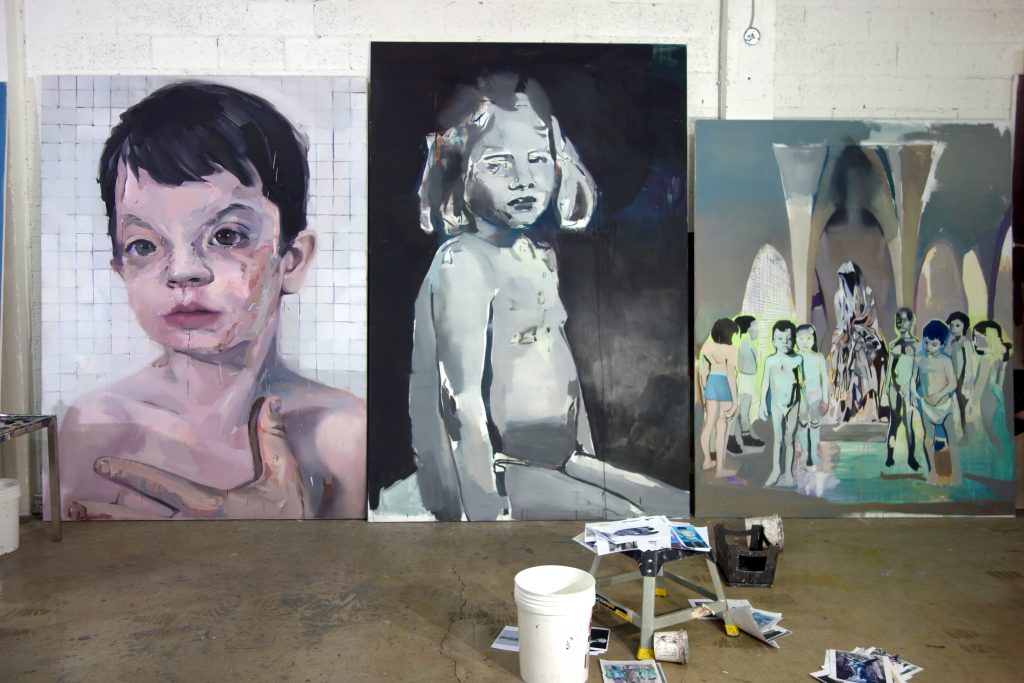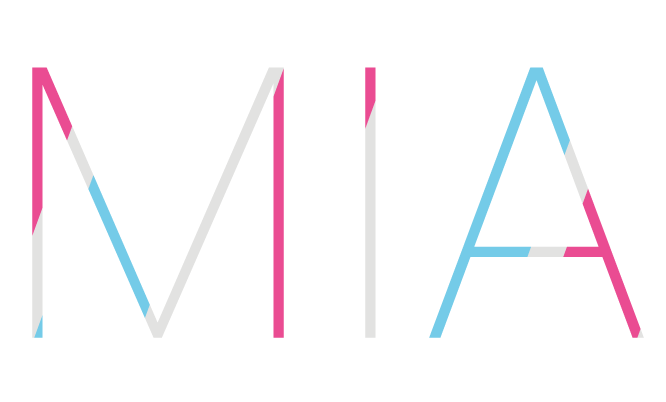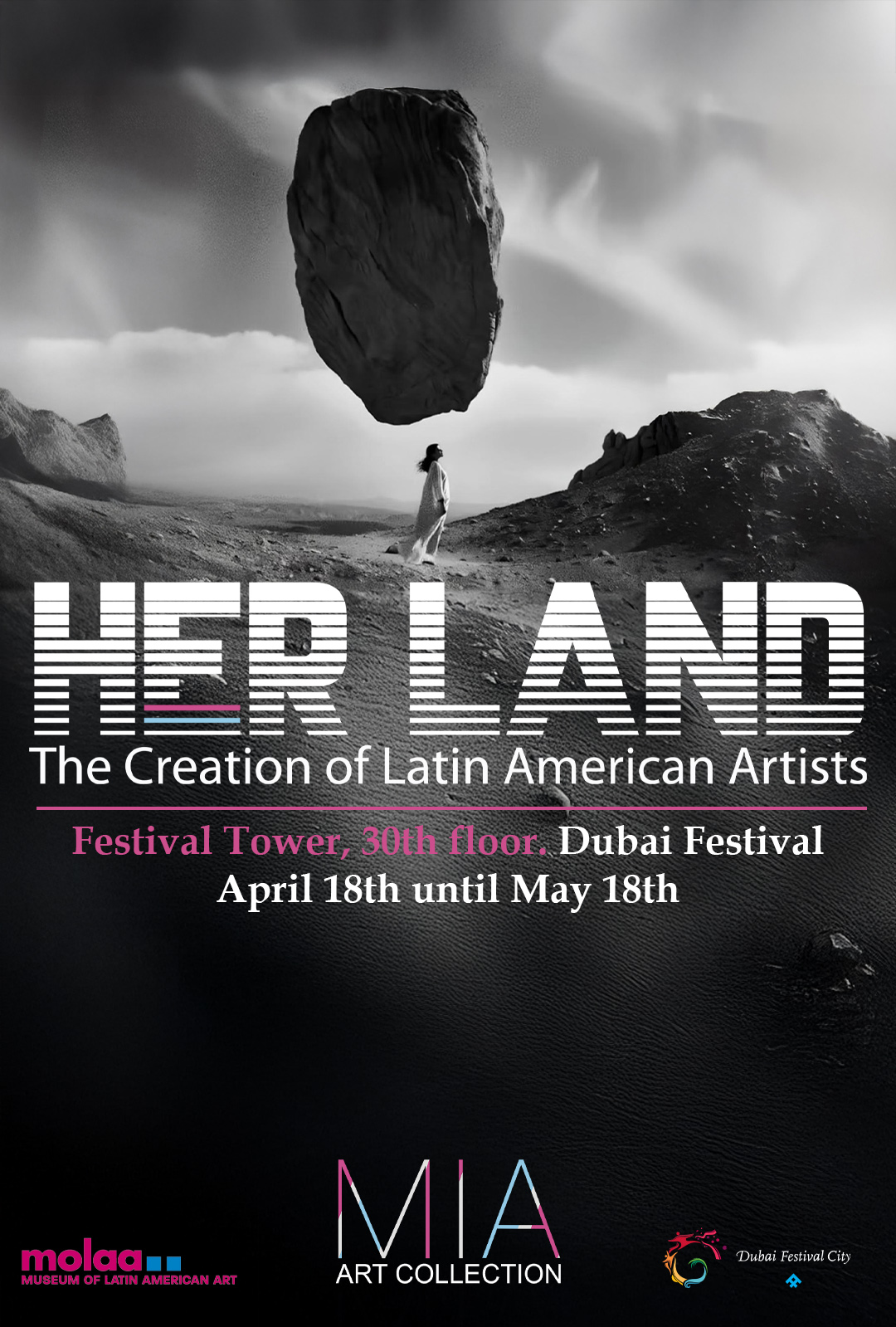Self-taught, she began her career as an artist while studying Philosophy at the University of Buenos Aires. Her figurative painting has been linked from the beginning to a process of writing and analysis of both philosophical and biological concepts. Her work unfolds primarily between the spaces of painting and drawing. She has exhibited her work in Argentina and in the United States. She currently lives and works in Miami.
1.How and when is your passion for art born?
As soon as I started painting I developed a very close and unfading connection with art. I was 16 years old, the first time I attended a painting workshop in Buenos Aires. I used to go and paint once a week, every thursday, after school. I could say it was somehow like love at first sight. Since that first Thursday, everything in my life has been about painting.

2.What does your artistic manifesto consist of and how do you like to express it?
My work deals with bioethical questions about the place of anomaly in human species. I think in the future events that will take place in a society that seems to be tethered with genetic engineering. What will happen to the anomalous when tools designed for the enhancement of a specie become available or a possible option. Will genetic anomaly cease to exist? And how will that shift humanity? I take mostly pictures I obtain from medical archives as references to construct my paintings. In these pictures, the subject becomes object of an investigation, a mere informative element that exposes its pathology in order to be classified or to help establish a classification. Through my work, I aim to highlight, denude and shred the devices that “pathologize” the anomalous by shielding all thought or discriminatory action behind biological foundations. There is identity in the anomalous and it expands beyond its clinical delimitations. These characters usually perceived as anonymous expressions of a pathology, instead of named expressions of a humanity, are much more than a clinical identity. This is why the eyes and the expression of the characters occupy a central place in my work, as I try to paint the person and not the subject, the weight and presence of an entity, which stands in contrast to medical files where eyes are often masked and concealed. I work with genetic divergence because of the subversive potential it entails in moving away from the norm, and because I believe it is important when it comes to disarming established concepts such as ableism, and many others related to discrimination and other forms of oppression. I find the Different fascinating and incredibly beautiful and I believe society should be responsible for achieving gender equality, racial equality, and also genetic equality allowing identities with different configuration of the body and the mind to honestly thrive.

3. When creating, what are your inspirations?
My inspiration comes from different places. Usually when it comes to putting together a series of works, I find my references within the fields of philosophy, biology and art. Anyways, I don’t feel very related to the word inspiration, since I think that more than an inspiration, the creative process is a continuum that evolves day by day, nourished by everything that happens all around. In that regard, everything, from a conversation with a friend, or a reading or a particular event can influence or help me understand how to materialize or sharpen an idea I have for a painting, as I live and see the world through an artistic perspective that never fades away.
4. How do you see the development of feminine art in the world?
I generally see parity of gender when it comes to contemporary art exhibition spaces. There are as many great women artist showing their work as men. At the same time, I see more work visibilising and addressing gender issues in the art scene. However, in a historical sense, great museums still tell art history from a white and patriarchal perspective, constructed in 99.9 percent by men’s first and last names, where women only appear as an inspirational object, or as it is said (nicely) in the canons of art history, ¨inspiring muses¨, or in the great master´s biographies, as companions, servants, groupies, lovers or faithful emotional supporters in nights of frustration and drunkenness. In other words, art history´s extras or appendages. However, within the artistic avant-gardes, there are women that are of fundamental importance, and that haven’t yet been given the place they deserve. One of them is Martha Boto, who recently had a virtual exhibition at Mia Anywhere. She was a remarkable artist within the kinetic movement of which no retrospective exhibitions or reasoned catalogues exploring her life and work have yet been made. In this sense, I believe that museums are indebted and should reconsider what they decide to exhibit, since they remain entrenched in hegemonic and centered narratives in which an indisputable history of art is built upon.

5. In terms of contingency, what do you think of the digitization of art shows, such as MIA Anywhere?
It seems to me that during this pandemic situation, the digitalization of exhibitions and artistic content was not only a suitable alternative to make art visible, it was also the only one. And I think it is an interesting tool to continue developing in the future and maybe as a way to complement physical exhibitions. However, I think that there is no virtual experience, at least not yet, that succeeds in capturing what seeing artwork in person conveys. Many works of art are conceived and intended to be experienced live and intimately by the viewer. In the case of painting, digitalization doesn’t capture the auratic existence of the artwork.
6. Do you think that new paradigms will emerge in art, post pandemic?
I think this is a good opportunity to rethink the art system, which is nothing more than a faithful reflection of the anthropocentric and capitalist logics that govern our society. The same ones that have brought our planet to a crisis of multiple dimensions: ecological, humanitarian, political, social and economical. I do not know what changes the pandemic will leave behind, but I aspire to an art system with more space for artistic productions with strong social commitment, and less space for pompous fairs, biennales and auctions that eternalize and legitimize the place of art as merchandise or luxury. I long for a more equitable system for artists from peripheral countries or marginalized cultures as for artists in general, as the circumstances to be an artist and create artwork are quite a struggle. In other words, less art as a product or commodity, and more art as a paradigm of knowledge and reflection.
7. How do you see the role of MIA art collection around the empowerment of feminine art through digitization?
I think Mia art collection is doing a fantastic and necessary work, and I feel honored to be part of this project. I admire the commitment of Alejandra and MIA’s team with every artist they present, as with the richness of the contents spread in their digital platforms, and the support they provide to artists in an altruistic way, especially today, being artists one of the groups most affected by the pandemic. Also, I find it wonderful that in this moment of female empowerment, there is a platform like Mia art collection that thrives on working alongside women artist, as well as creating a network of women in the art world, women artists, women curators, women collectors, women gallery owners, women art directors, women spectators. Cheers!



1 reply on “Exclusive: Argentinian artist Lucía Maman talks with MIA”
katana